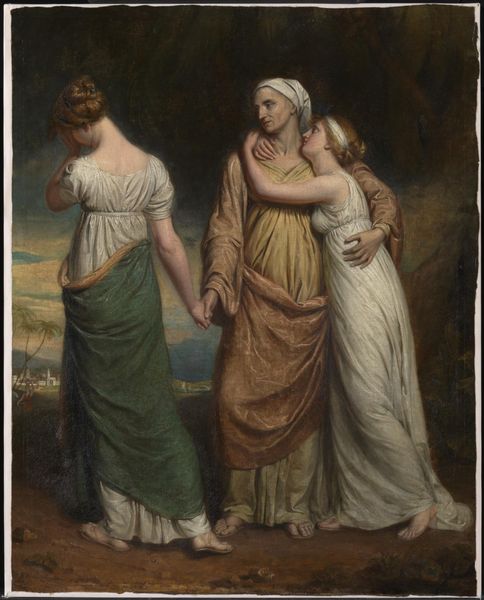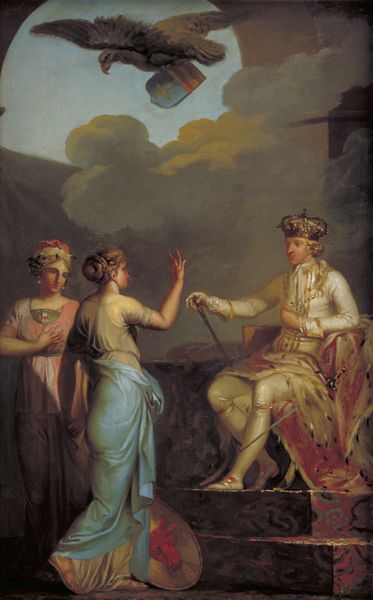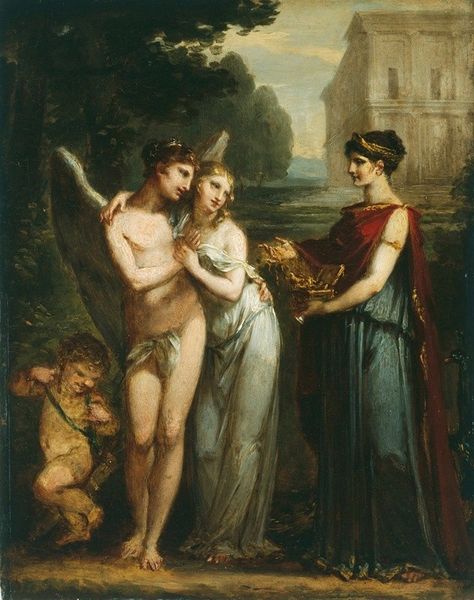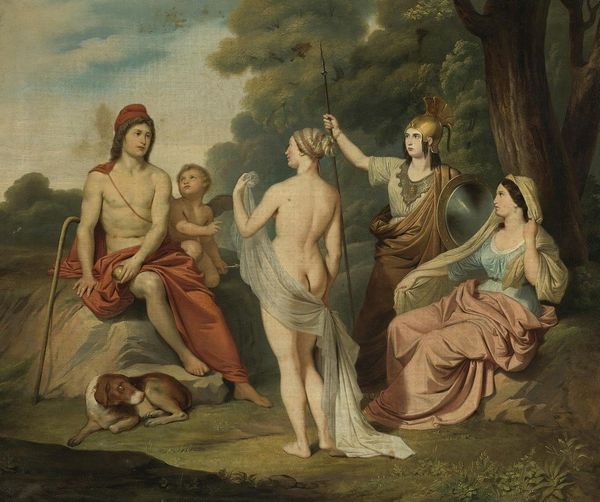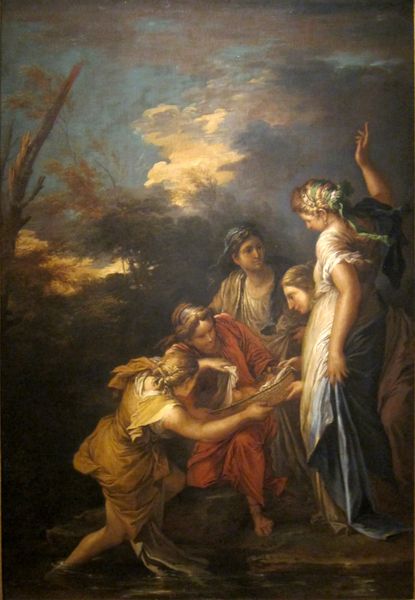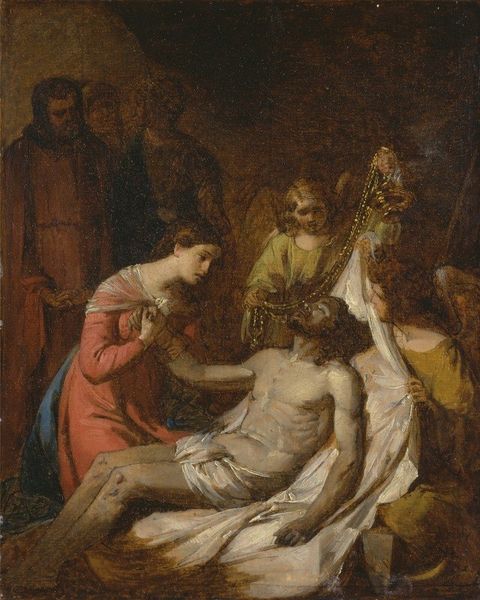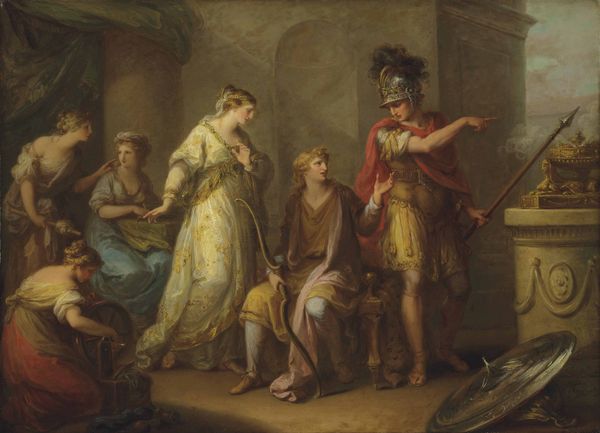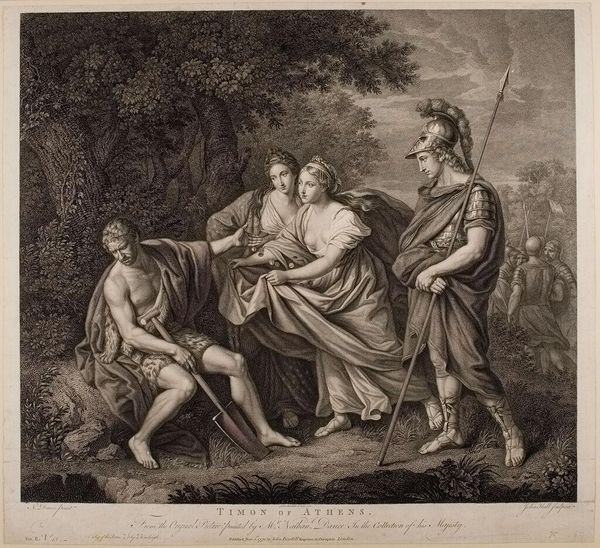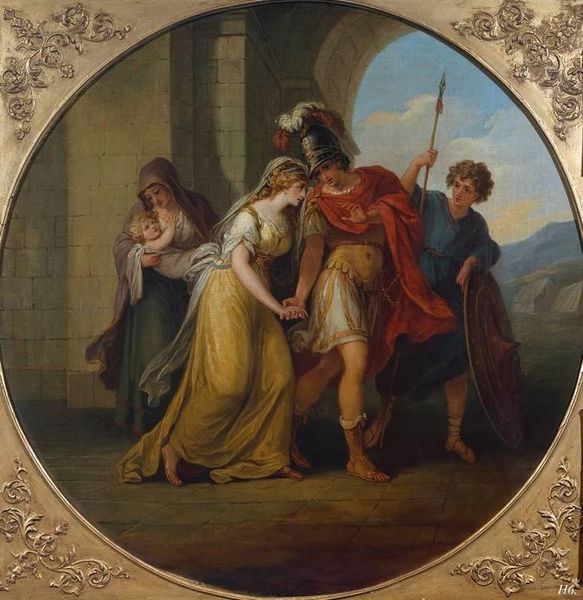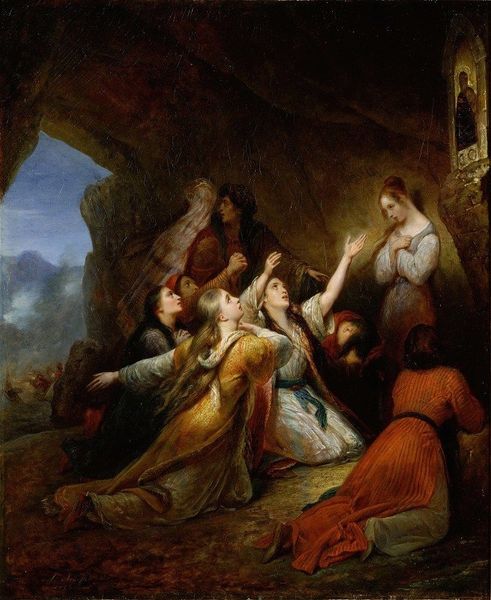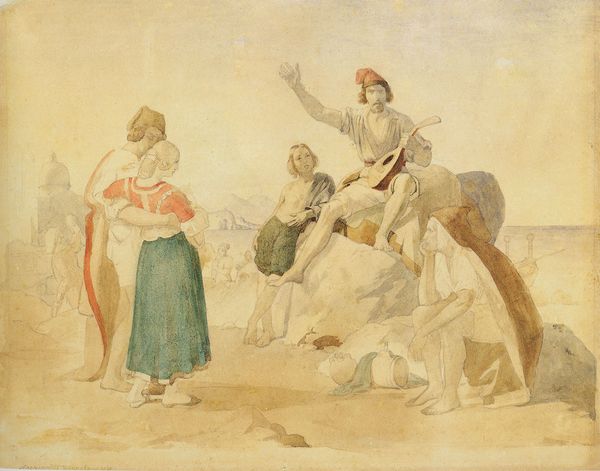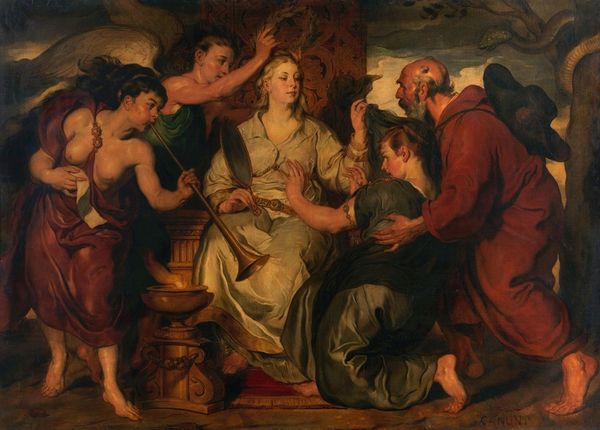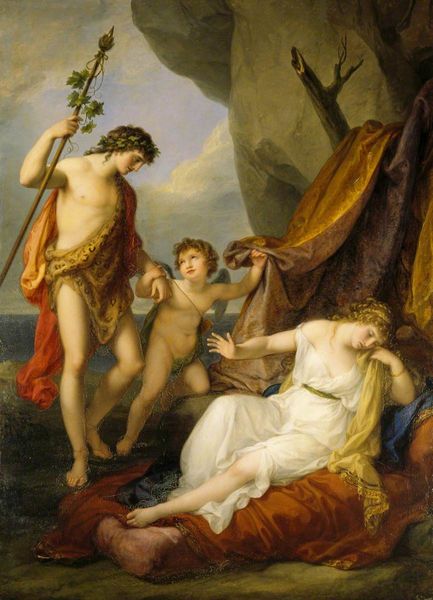
Portrait of a Gentleman, his Wife and Sister, in the Character of Fortitude introducing Hope as the Companion to Distress (‘The Witts Family Group’) c. 1775
0:00
0:00
Dimensions: unconfirmed: 1180 x 1040 mm
Copyright: CC-BY-NC-ND 4.0 DEED, Photo: Tate
Editor: This is "Portrait of a Gentleman, his Wife and Sister…" by Richard Cosway. The figures, draped in classical garb, look quite theatrical. What strikes you about it? Curator: Notice how Cosway uses costume and setting to elevate the Witts family. The classical garb wasn't just about aesthetics; it signaled their education and social standing. Consider the production of these garments, the textiles used. Where did they come from, who made them? These details reveal a complex web of labor and consumption. Editor: So, the clothes are not just window-dressing. They also point to a wider economic picture. Curator: Precisely! And the landscape, too, isn't mere backdrop. It's a stage carefully constructed to convey power, taste and the consumption of raw materials. This portrait becomes a document of material culture. Editor: That gives me a whole new perspective. Thanks!
Comments
tatebritain 6 months ago
⋮
http://www.tate.org.uk/art/artworks/cosway-portrait-of-a-gentleman-his-wife-and-sister-in-the-character-of-fortitude-t06969
Join the conversation
Join millions of artists and users on Artera today and experience the ultimate creative platform.
tatebritain 6 months ago
⋮
Although principally a portrait miniaturist (see cabinet 2: The Portrait Miniature in the Eighteenth and Nineteenth Centuries), Richard Cosway also produced some larger-scale works in oil. This allegorical portrait was painted following the death of a young London linen draper, Broome Witts, in 1769. Witts is shown here in the role of Fortitude, introducing his sister Sarah in the guise of Hope (left) to his wife Elizabeth, depicted as Distress. This memorial image was presumably commissioned by one or both of these ladies. Gallery label, August 2004
